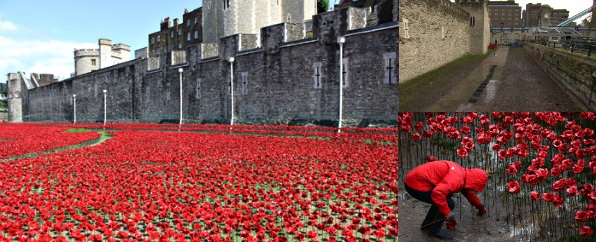Volunteers have almost completely removed all the ceramic poppies installed in the moat of the Tower of London and now all that’s left in its wake is a pit of mud.
The installation of the 888,246 red ceramic poppies started way back summer of this year with the first flower ‘planted’ early in July. As each of the poppies were placed on their respective faces, the moat of the Tower of London soon became a sea of red, a fit to the installation’s name — Blood Swept Lands and Seas of Red. However, the flowers’ cover killed the green grass that laid beneath them.
Now, with the blood-hued field of ceramic poppies almost gone, all that’s left is a mud pit — a haunting picture comparable to the wet fields of Flanders during the Great War.
It has been estimated that a total of five million people had come to visit the ceramic poppies display made in honor of every British and Commonwealth citizen who died in the First World War. Sculpture Paul Cummins and designer Tom Piper were the ones behind the moat of the Tower of London project with the former, along with his team, able to complete the last of the ceramic flowers in time for the celebration of Remembrance Day, November 11. There even was a petition to extend the display of the ceramic poppies for a week to allow more tourists who wanted to come to see it to do so.
Each of the flowers were priced at £25 with the proceeds going to six charities affiliated with the armed forces.
More Ceramic Poppies News
British Prime Minister David Cameron gave ceramic poppies to his fellow leaders coming from the Commonwealth nations in recognition to their respective countries’ contributions and sacrifices during the Great War.
Furthermore, Paul Cummins and Tom Piper, the ones at work behind the amazing project, are set to be included in the Queen’s honors list this coming New Year.
